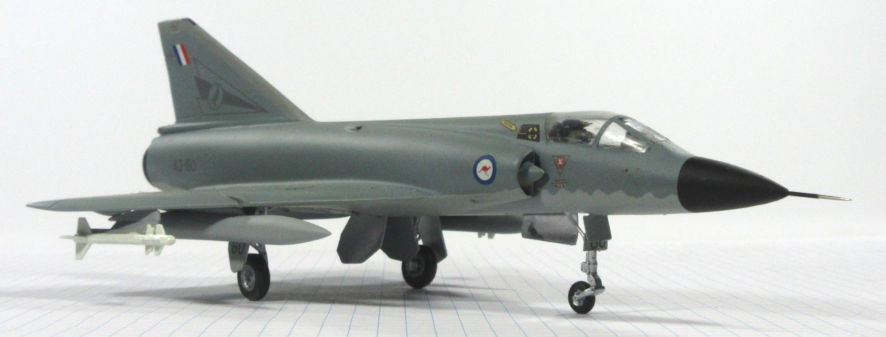Deltas
Dassault Mirage III – Avro Vulcan B.2 – Aerospatiale/BAC Concorde
After World War II aeronautical research suggested the potential of a triangular wing for high speed flight. It has many advantages due to its aerodynamic characteristics and has some structural advantages over swept back wings. It also has some disadvantages which can be mitigated by modifications to the pure delta wing which include a modified delta shape, such as that on the Aerospatiale/BACConcorde, or the tailed or canard delta, both of which are common on modern fighter aircraft.
When the idea of looking at delta winged aircraft came to mind I didn’t think there would be many in our museum yet. However, I was surprised because there were more than I expected. I counted about ten in the gallery of Experimental and Prototype aircraft and few more in other galleries. Here are three that I found in other galleries.
Dassault Mirage IIIO in 1/72 by Frog
The Mirage III is a classic delta fighter, designed and built in France in the 1950s and making its first flight in 1956. It was also the first European fighter to exceed mach 2 in level flight. It’s good rate of climb and maneuverability made it a good fighter and it was also capable in ground attack and reconnaissance roles. It major users included the French, Israeli, Pakistani and Australian air forces and over 1400 were manufactured.
This model was made from the old Frog kit that was first published in 1975 and was a fairly good kit for its time. You might still be able to find copies of this kit in the boxes of several different brands but I wouldn’t get very enthusiastic about them these days and their only real advantage it would have is in being cheap. Heller published a kit of the Mirage IIIE in around 1980 which is considerably better but is also harder to find. There is also the perfectly adequate High Planes kit. The reason I made the Frog kit was mainly because it was the only one readily available at the time. If I was making a Mirage III model now I’d opt for the new Modelsvit kit which is available in a number of options. It comes highly recommended, Hyperscale called it ‘a very nice kit’ and Fine Scale Modeler called it ‘impressive’.
Avro Vulcan B. In 1/72 by Airfix
The Avro Vulcan was the most advanced of Britain’s three V-Bombers. It was designed initially as a high altitude and high speed strategic bomber which later transitioned to a low-level role and was later adapted to other roles including maritime reconnaissance. The initial Vulcan B.1 has a straight leading edge to its wing but the more advanced B.2 version had an enlarged wing which extended forward, giving the aircraft greater performance. The Vulcan’s last operations were the very long range bombing attacks during the Falklands war.
This 1/72 made was made from the 1983 Airfix kit, which was not a bad kit back then (see my Workbench Note), but that was not the common opinion. Much more recently Airfix have published a new version of this kit which is preferable, so if you are looking for this kit at a swap n sell you’d probably want to buy the 2021 tooling but will most likely come across the 1983 kit. Almost everybody says the latest version is a great improvement over the old one and you might find the Flory build review of this model on youtube interesting if you have the time and inclination.
Aerospatiale/BAC Concorde
This supersonic airliner must be one of the most elegant aircraft ever made. What a pity that it turned out to be a wrong direction in the evolution of airliners, coming onto the scene around the same time as the Boeing 747 which demonstrated that people would rather fly cheaper than fly faster. Part of the Concorde’s abilities was due to the special shape of it’s ogival delta wing There are no Concorde’s flying today but all those in existence when they were taken out of service in 2003 have been preserved so it is still possible to see one of these magnificent machines in person.
Most people would tell you that this 1/72 kit of the Concorde is unbuildable. The kit originally came from Heller in 2004 with Air France livery. A year later Airfix released it with British Airways livery and, since then, Revell have published the same kit. They are all the same basic kit and are all a serious challenge to a modeller’s patience and skill. Better, perhaps, to have a go at the Airfix 1/144 which is truly ancient, having been first published in 1966, but is much easier to make. But if you want big and beautiful going into battle with the 1/72 kit is what you have to do and the Fine Scale Modeller review mentions some of the problems you’ll have to cope with.


